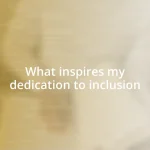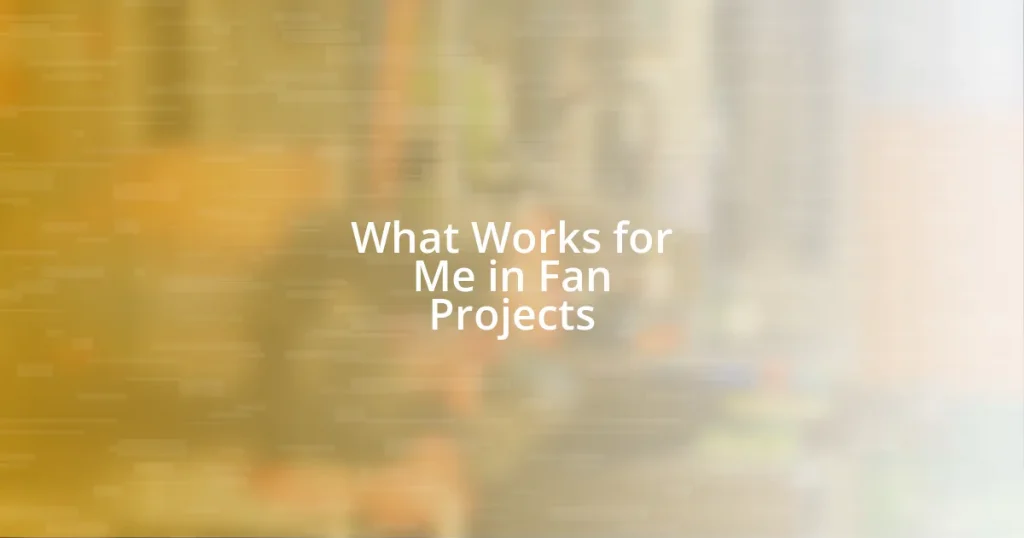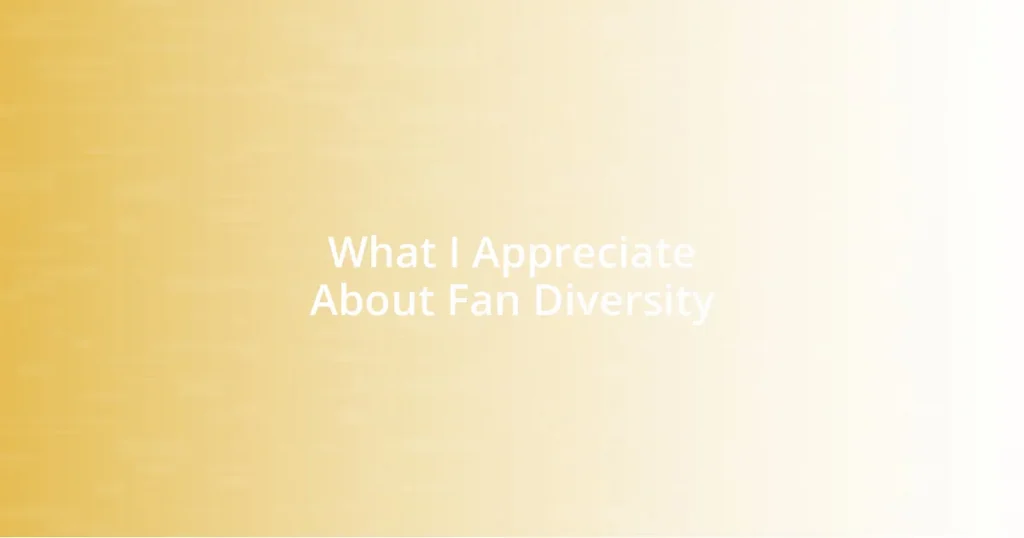Key takeaways:
- Inclusivity fosters a sense of belonging and enhances mental well-being by valuing diverse identities and perspectives.
- Personal experiences, such as observing marginalized individuals, can ignite a commitment to inclusivity as a fundamental human right.
- Role models like Maya Angelou and Michelle Obama exemplify the impact of advocacy for inclusive practices in fostering equality and support.
- Creating safe spaces for dialogue and promoting diverse representation are practical steps essential for building an inclusive environment.

Understanding the importance of inclusivity
Inclusivity is vital because it creates a sense of belonging. I remember a time at a community event when someone shared their story of feeling left out due to their background. Their vulnerability reminded me how essential it is for everyone to feel valued and heard.
When I think about inclusivity, I can’t help but wonder: how can we truly grow as a society without embracing diverse voices? Multiple perspectives not only enrich discussions but also foster innovation. I’ve seen firsthand how a team that welcomes different viewpoints can come up with creative solutions that a homogenous group might overlook.
Moreover, inclusivity can significantly impact mental well-being. I’ve witnessed individuals thrive in environments where their identities are celebrated rather than marginalized. Experiencing acceptance can boost self-esteem and encourage people to share their talents, ultimately leading to a stronger, more connected community. Isn’t that something we all deserve?

Personal experiences shaping my commitment
As I reflect on my early school years, I remember a particular classmate who struggled to fit in. I could see the loneliness in his eyes, and it struck a chord with me. That experience ignited a passion in me to support others who might feel marginalized, shaping my belief that inclusivity isn’t just a trend; it’s a fundamental human right.
Later in life, while volunteering at a local youth center, I had the pleasure of working with a girl who had overcome significant barriers due to her disability. Her determination inspired me. I often think about the resilience I witnessed that day, and I realize how essential it is for society to create spaces where individuals can thrive, regardless of their challenges.
When I embraced various cultures through travel, I learned the beauty of different traditions and perspectives. One evening in a small village, I shared a meal with a family and listened to their stories. It was then that I understood that embracing inclusivity requires an open heart, a willingness to learn, and an appreciation of our shared humanity.
| Experience | Insight Gained |
|---|---|
| Early School Years | Recognized the importance of supporting those who feel marginalized. |
| Volunteering at Youth Center | Witnessed resilience and the need for inclusive spaces. |
| Traveling and Cultural Exchange | Learned to appreciate diverse perspectives and shared humanity. |
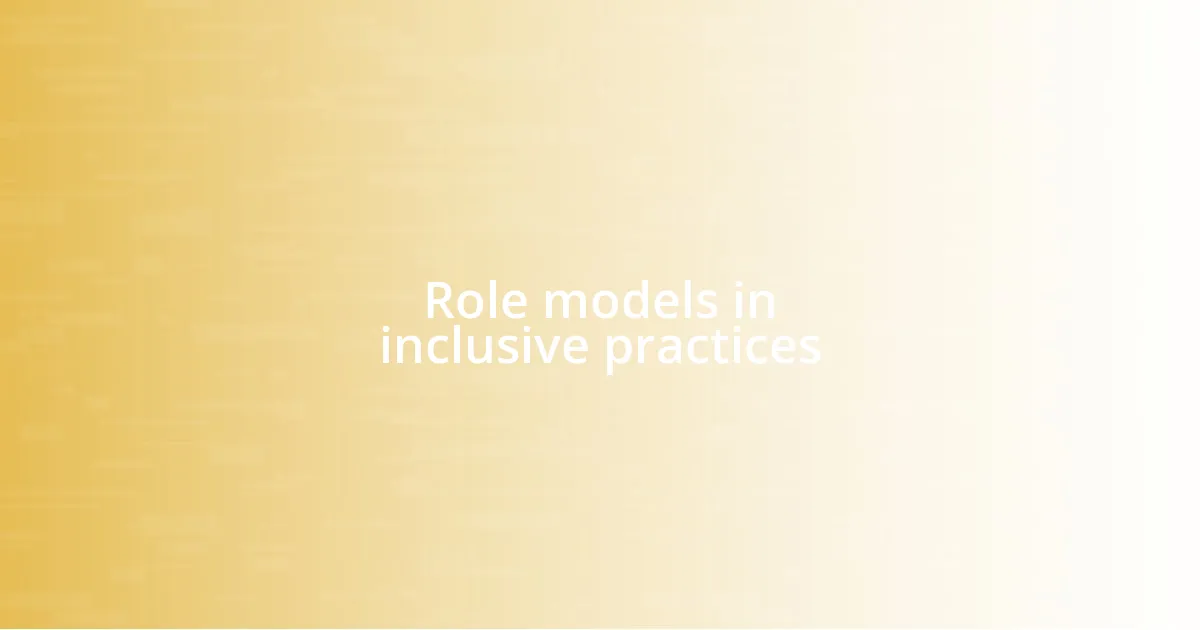
Role models in inclusive practices
Role models in inclusive practices have the power to shape our understanding of belonging. I often think about a former colleague who actively championed accessible workplace policies. Her unwavering dedication made it clear how vital it is to ensure that everyone, regardless of their abilities, has equal opportunities to thrive. It’s particularly inspiring to see individuals who create pathways for others, fostering a culture of support and inclusion.
- Maya Angelou: Through her writings and activism, she emphasized the beauty of diversity and the importance of acceptance, inspiring countless individuals to embrace inclusivity.
- Michelle Obama: Her work focused on championing education for all, particularly for girls and marginalized communities, igniting change and inspiring action towards inclusivity.
- Malala Yousafzai: A powerful advocate for girls’ education, she embodies resilience and determination, reminding us of the importance of lifting others up in the pursuit of equality.
Reflecting on these role models reinforces my belief that inclusivity is not just an idea; it’s a call to action that each of us can embody in our daily lives. Their stories encourage me to remember that individual dedication can indeed spark significant change.

Practical steps to promote inclusivity
In my journey to promote inclusivity, I’ve found that one effective step is creating safe spaces for open dialogue. I vividly recall hosting a discussion group at work where everyone shared their unique experiences and perspectives. Initially, there was hesitation, but as each voice was heard, the atmosphere warmed, and connections blossomed. Isn’t it fascinating how simply listening can bridge significant gaps?
Moreover, I believe in the power of continuous education on diversity and inclusion. For instance, I once attended a workshop that yanked me from my comfortable notion of inclusivity into a more nuanced understanding. It emphasized unconscious biases and gave practical tools to address them in daily interactions. Have you ever noticed how little shifts in language and behavior can influence an entire environment?
Additionally, actively promoting diverse representation in leadership roles is crucial. I remember a moment when a colleague, who was the only person of color in the room, spoke up during a meeting. The reaction to his insights highlighted just how important it is to ensure diverse perspectives are included in decision-making processes. After all, doesn’t a blend of backgrounds lead to richer ideas and solutions? Embracing such steps is fundamental to fostering an inclusive environment where everyone feels valued.
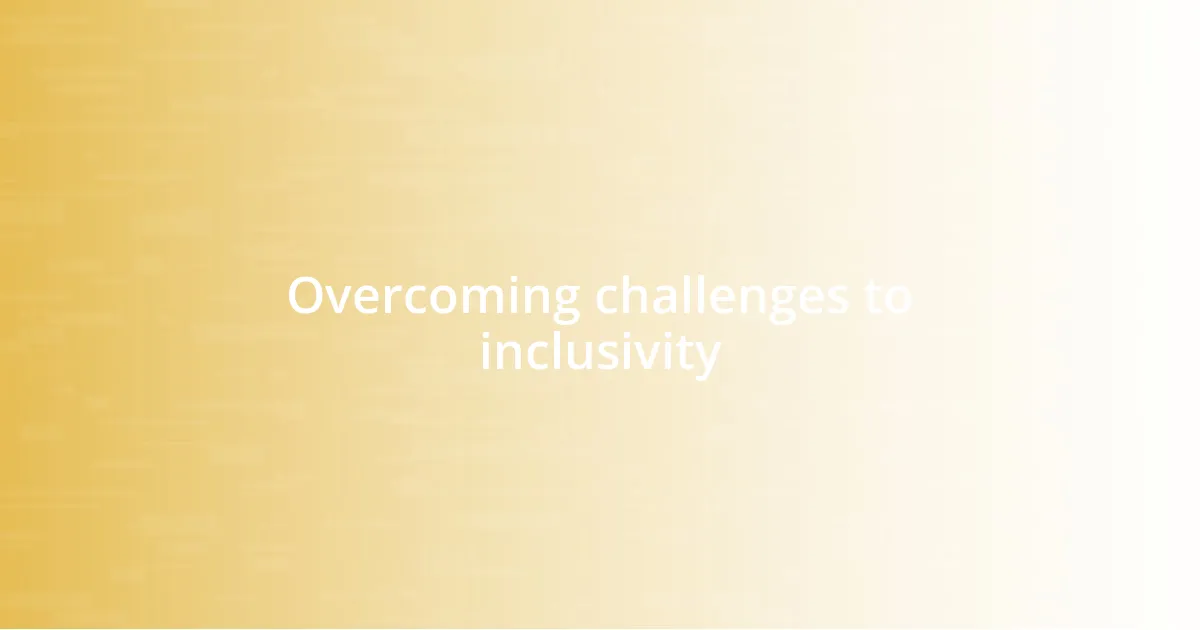
Overcoming challenges to inclusivity
It’s not uncommon to encounter resistance when striving for inclusivity. I remember a community event I organized, aimed at bringing together people from various backgrounds. Despite my enthusiasm, I faced pushback from a few who were skeptical about the need for such discussions. It was frustrating at the time, but with patience and clear communication about the benefits of inclusivity, I gradually saw them come around. Isn’t it interesting how, sometimes, just sharing facts and stories can challenge preconceived notions?
One of the biggest challenges I’ve experienced is addressing unconscious biases, both in myself and others. During a team project, I realized I was unconsciously favoring ideas from those I perceived as more “qualified.” This became a turning point for me. I opened up about my biases and encouraged my peers to do the same. It felt liberating—transforming vulnerability into strength created an atmosphere of trust where we could all contribute freely. Have you ever considered how owning your biases can lead to greater reflections on your journey?
Navigating the complexities of inclusion often means confronting one’s own discomfort. I’ll never forget attending a diversity training, where I found myself in tears as stories of exclusion were shared. Initially, I felt defensive, but as I engaged with the discomfort, I recognized it as a necessary part of the journey toward creating an accepting environment. It’s amazing how discomfort can be a catalyst for growth, pushing us to advocate for inclusivity in ways we never thought possible. As you reflect on your own experiences with discomfort, what steps can you take to turn that into a commitment to inclusivity?
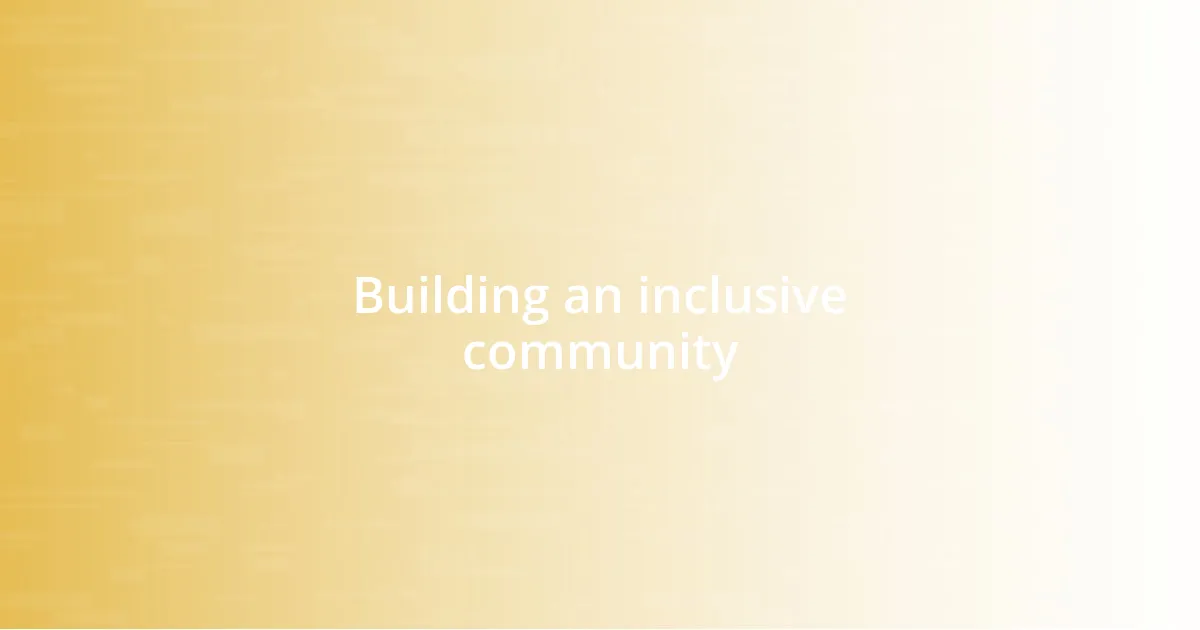
Building an inclusive community
Building an inclusive community starts with fostering genuine connections. I once volunteered at a local high school where I helped organize a cultural fair. Seeing students from different backgrounds share their stories and traditions was eye-opening. It made me realize that inclusivity thrives when individuals feel safe to express themselves. Have you ever seen how a shared meal can break down barriers and spark understanding?
Another key aspect is recognizing the importance of empathy in our interactions. I remember a time when a friend opened up about their struggles with fitting in. Listening to their story challenged me to reflect on my own experiences with exclusion and how that shapes our community dynamics. Isn’t it striking how empathy can serve as a powerful tool to lift others up and encourage a sense of belonging?
Inclusivity also flourishes in environments where feedback is welcomed and valued. One of my greatest lessons came during a team project when one member hesitated to voice their ideas, fearing they wouldn’t be heard. I encouraged them to share without judgment. Watching them gain confidence and contribute valuable insights reinforced my belief that everyone has something meaningful to offer. I’ve often wondered how many great ideas might go unheard without a safe platform to express them.

Measuring impact of inclusivity efforts
Measuring the impact of inclusivity efforts can be a transformative process, one that allows us to genuinely gauge progress. I once facilitated a survey after a community workshop, asking participants how they felt about the inclusivity initiatives we introduced. The honest feedback people provided not only surprised me but also highlighted the areas where we needed to improve. Isn’t it eye-opening how such straightforward methods can reveal both victories and opportunities for growth?
One of the most enlightening experiences I had was during a follow-up discussion we organized months later. As participants reflected on changes in their interactions and experiences, I witnessed firsthand how a few minor adjustments led to a noticeable shift in the group’s dynamics. Those moments where someone shared how they felt more welcome and heard were priceless. Have you ever considered how powerful it can be to see tangible results from our efforts?
I also believe it’s essential to analyze both quantitative and qualitative data. For instance, tracking attendance at diverse events can showcase engagement levels, while personal testimonials reveal deeper emotional connections. After collecting this data during various initiatives, I often ponder how these insights could drive future actions. What better way to refine our approach than by truly listening to the voices of those affected?












